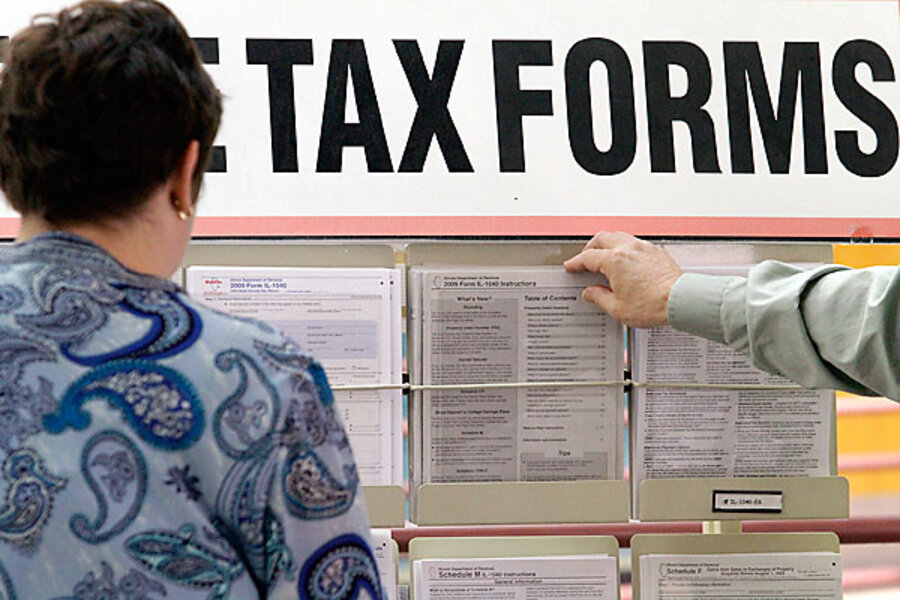How taxpayers are paying for huge corporate tax hikes
Loading...
Donald Marron takes the “throne” at the Tax Policy Center in less than two weeks, and he’s already showing his wisdom on tax policy. Today on his blog he talked about the “bank tax,” aka the “Financial Crisis Responsibility Fee”–from the Administration that can never say “tax” no matter how evil the entity on which said tax would be imposed. Donald was focused on the issue of whether revenue from the bank tax would actually be used to reduce the deficit/pay back the TARP money owed (as the Administration claims it would), or whether it would be grabbed up by all the other more exciting ways to use the money–for example, more tax cuts!
But I liked the little lesson in tax incidence that Donald gave on the way to posing his budget question (emphasis added):
As noted by other participants in today’s hearing, the bank tax raises a host of questions: Is it possible to design the tax so that it is ultimately paid by major financial institutions (by which I presume Geithner means their shareholders and top management), or will it get passed through to their customers? How much, if at all, would the tax reduce bank lending? Is it fair to target the banks even though the bank part of TARP actually made money for taxpayers? Would the tax reduce risks in the financial system?
You see, no matter how the tax is literally (statutorily) structured and who would actually be responsible for writing the check to the government (such as an “evil corporation” perceived as deserving of that tax), the true economic burden of the tax must ultimately fall on some real people. You can say you’re only taxing “companies” and not “people,” but what you’re really doing is indirectly taxing people, rather than directly taxing people. When a tax is levied on a business rather than on a household, the burden must still be distributed among households based on those households’ roles in the various markets in which the taxed business operates–through their roles as workers for that business, investors in that business, or consumers of the goods or services the business produces. A tax on a financial corporation, for example, could end up reducing returns to shareholders of that corporation or reducing salaries of the top management, but it could just as well end up raising the cost of loans to households who borrow to pay for their houses, cars, and college educations–or burdening some households by depriving them of such loans altogether.
Policymakers seems to prefer finding these indirect ways of raising taxes, because these policymakers are politicians, too, and they understand that indirect taxes levied on businesses don’t look as obviously burdensome on ordinary, real people. The irony is that indirect taxes burden real people every bit as much as direct taxes on household incomes do, but the direction of the burden of an indirect tax is harder to control and tailor–because you are literally levying the tax on businesses based on business characteristics, and not on households based on household characteristics. So in the process of trying to make a tax look like a tax on an “evil corporation” and not a tax on middle-class households (or households with incomes below $250,000), just for example, you get a distribution of the tax burden that is nearly impossible to keep away from those very households you’re trying to avoid taxing–because you cannot exempt (protect) any households directly when you are not taxing any households directly.
This is in fact the problem with the excise tax on high-end health insurance plans levied on (evil?) insurance companies in the health reform bill. It is a tax limited to high-cost plans because policymakers intended it to look like a tax only on evil corporations but that would ultimately burden only rich households. But because it is tied to the characteristics of the health insurance plans the insurance companies sell, rather than the characteristics of the households who purchase such plans, it will inefficiently, unintentionally burden some lower-income households who purchase high-end insurance, while exempting from any burden many high-income households who do not purchase high-end insurance. In contrast, if the tax had been levied directly at the household level through the individual income tax, the tax could be tailored to more comprehensively apply to the employer-provided health plans of only higher-income households–or any subset of households policymakers feel comfortable burdening with the tax.
So that’s tonight’s public finance lesson on “tax incidence.” Tomorrow I hope to talk about taxes and “externalities” and the case of the BP oil spill (perhaps better labeled an “eruption”). Speaking of another potential “evil corporation”…
Add/view comments on this post.
------------------------------
The Christian Science Monitor has assembled a diverse group of the best economy-related bloggers out there. Our guest bloggers are not employed or directed by the Monitor and the views expressed are the bloggers' own, as is responsibility for the content of their blogs. To contact us about a blogger, click here. To add or view a comment on a guest blog, please go to the blogger's own site by clicking on the link above.





